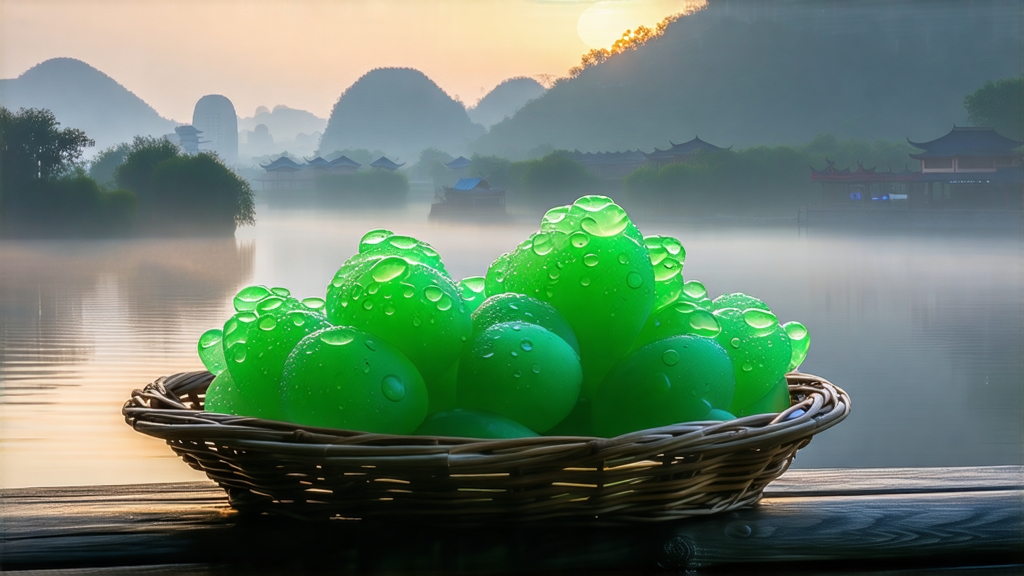
Among the jade-colored constellation of Chinese green teas, none carries the romance of early spring quite like Biluochun. Its name, literally “Green Snail of Spring,” was bestowed by the Kangxi Emperor in 1699 after he was captivated by the tiny spirals that resembled baby snails and the intoxicating scent that drifted from the imperial cup. Originally the tea was known by the humbler moniker “Xia Sha Ren Xiang”—“Scary Fragrance”—because, legend says, a tea-picker filled her basket so high with the aromatic leaves that passing travelers feared a supernatural force lurked inside. From such folklore emerges a tea that now ranks among China’s Ten Famous Teas, yet remains modestly rooted in the terraced hills of Dongting Mountain that rise from Taihu Lake in Jiangsu Province.
Geography is destiny for Biluochun. The lake’s vast surface stores daytime heat and releases night-time mist, wrapping the Dongting Dong and Xi peaks in a humid veil that forces the tea bushes to grow slowly, concentrating amino acids and fragrant volatiles. The soil is a friable mix of quartz sand and decaying bamboo leaves, porous enough to drain quickly yet rich in manganese and zinc. Even the fruit trees—peach, plum, apricot—planted generations ago between the rows play a role; their blossoms drop petals that decompose into additional perfume, while their canopy filters sunlight into a shifting mosaic of gold and shadow. No other Chinese green tea enjoys such an intensely floral terroir; cup a handful of fresh Biluochun buds and you can smell spring orchard before water ever meets leaf.
Although all Biluochun comes from this micro-region, connoisseurs recognize three ascending grades based on pluck and date. “Tou Cai” (First Pick, March 15–25) consists solely of the unopened bud and the adjacent half-unfurled leaf, downy silver-green and no longer than a housefly. “Er Cai” (Second Pick, March 26–April 5) allows one bud and one full leaf, still tiny but slightly less tippy. “San Cai” (Third Pick, April 6–20) includes one bud and two leaves, larger and more astringent yet still aromatic. Within each grade, further distinctions arise from elevation: bushes above 300 m on Dongting Dong Shan are called “Shan Cha” and fetch the highest prices, while lower slopes yield “Ping Cha” that delivers fragrance at friendlier cost. The rarest tier, “Wild Biluochun,” is harvested from seed-propagated trees that have never been pruned into hedges; their leaves are smaller, more mineral, and laced with a scent of alpine bamboo.
The crafting of Biluochun is a ballet of heat, pressure, and timing that unfolds within hours of plucking. First, the leaves are spread in bamboo trays no thicker than three centimeters and withered for 60–90 minutes depending on humidity; the goal is to reduce surface moisture by 15 % without any oxidation. Next comes “shaqing” (kill-green) in a drum pan fired to 180 °C. The tea master tosses 250 g of leaves at a time, his bare hand darting into the searing metal every four seconds to feel for the moment when the bud’s spine softens yet the down remains intact. After five minutes the temperature is dropped to 120 °C and the shaping begins. Using a spiral hand motion unique to Biluochun, the master simultaneously rubs and rolls the leaves along the pan’s wall, coaxing them into tight spirals while the residual moisture escapes in fragrant puffs. This step lasts 15 minutes and demands perfect choreography: too little pressure and the curl will loosen; too much and the leaf tip breaks, releasing bitterness. Finally, the tea is dried in two passes—first at 80 °C to 8 % moisture, then at 60 °C to the finished 4 %—before resting in lime-lined earthen jars for “huo hou,” a 48-hour stabilization that marries aroma and taste.
To brew Biluochun respectfully, one must respect its delicacy. Begin with glass or porcelain; yixing clay will mask the ethereal top notes. For every 200 ml of water, use 3 g of tea—about one level teaspoon of the snail-like curls. Water should be 75 °C, achievable by pouring boiled water into a